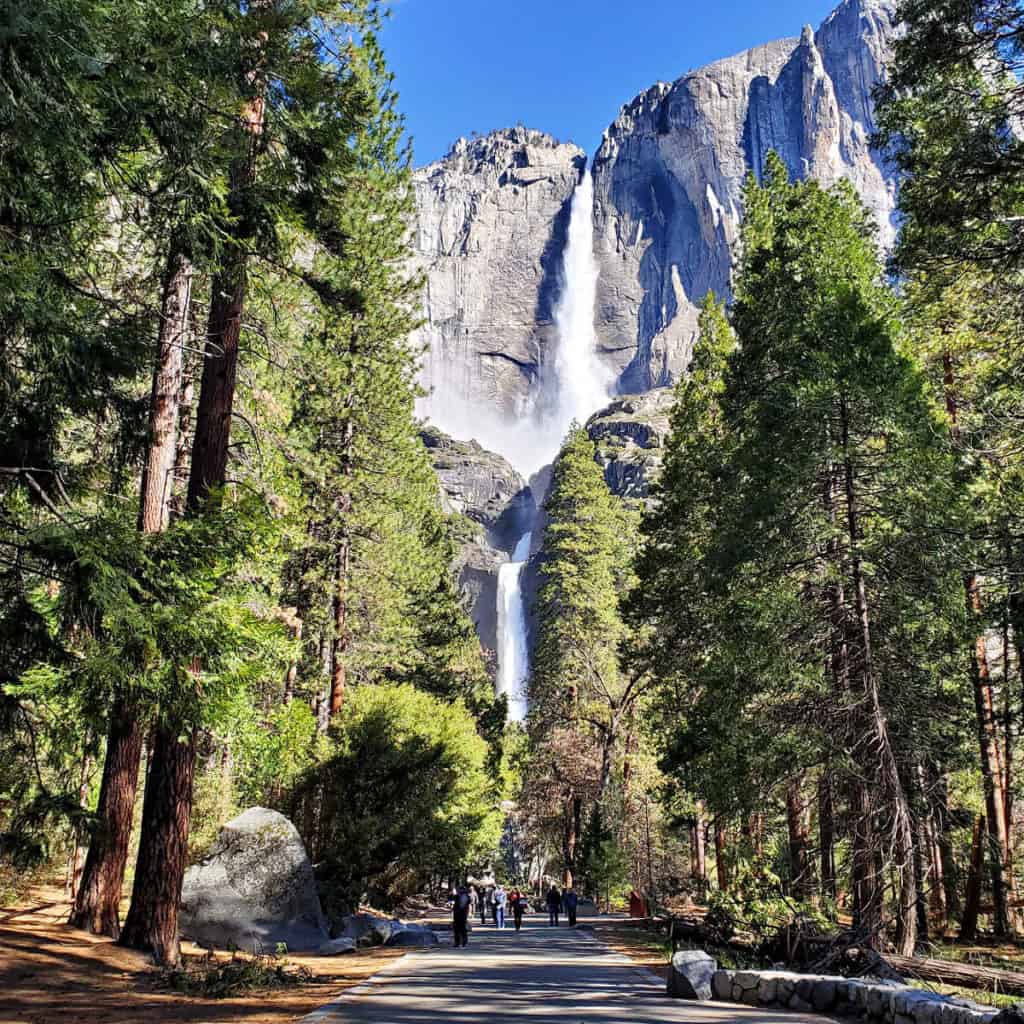
Yosemite National Park (/joʊˈsɛmɪti/ yoh-SEM-ih-tee[5]) is a national park of the United States in California.[6][7] It is bordered on the southeast by Sierra National Forest and on the northwest by Stanislaus National Forest. The park is managed by the National Park Service and covers 1,187 sq mi (3,070 km2)[3] in four counties – centered in Tuolumne and Mariposa, extending north and east to Mono and south to Madera. Designated a World Heritage Site in 1984, Yosemite is internationally recognized for its granite cliffs, waterfalls, clear streams, groves of giant sequoia, lakes, mountains, meadows, glaciers, and biological diversity.[8] Almost 95 percent of the park is designated wilderness.[9] Yosemite is one of the largest and least fragmented habitat blocks in the Sierra Nevada mountain range.
Its geology is characterized by granite and remnants of older rock. About 10 million years ago, the Sierra Nevada was uplifted and tilted to form its unique slopes, which increased the steepness of stream and river beds, forming deep, narrow canyons. About one million years ago, glaciers formed at higher elevations. They moved downslope, cutting and sculpting the U-shaped Yosemite Valley.[8]
Humans may have first entered the area 10,000 to 8,000 years ago, with Native Americans having inhabited the region for nearly 4,000 years.[10][11] European Americans entered the area by 1833, and settlers first entered the valley in 1851, with James D. Savage credited as discovering the area that became Yosemite National Park.[12]
 |